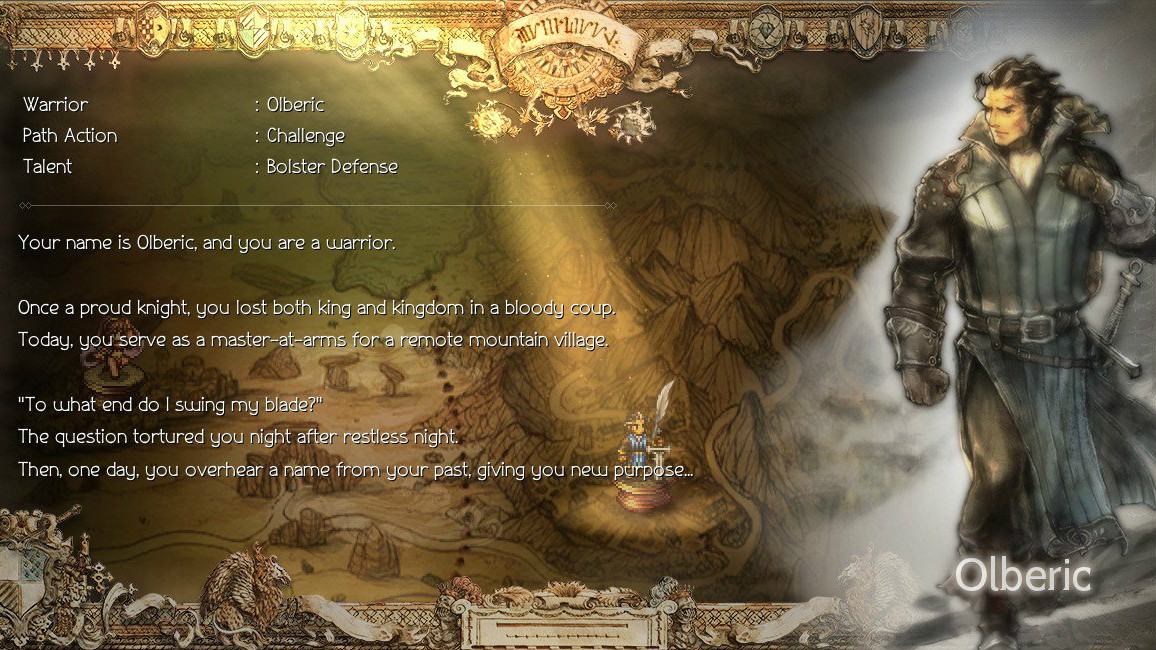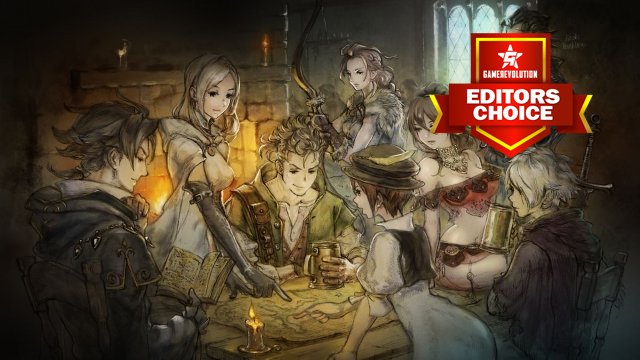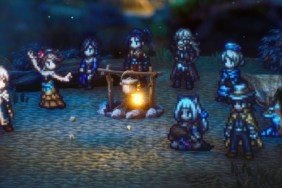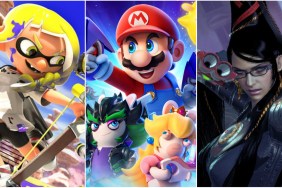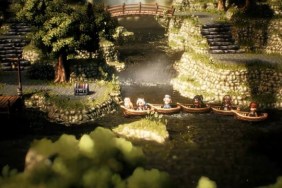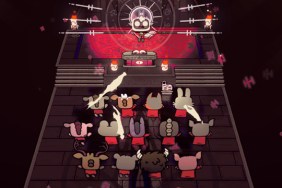Octopath Traveler is one of those games that tap into nostalgia feels at full steam. Tons of gamers have fond memories of Square Enix’s 16-bit RPGs, so much so that some of them just can’t accept that Final Fantasy 7 was the best game in the series, not Final Fantasy 6 (fight me IRL)
It’s no surprise then that Square decided to turn back the pages with its latest RPG and present a game that mates beautiful 16-bit style sprites with modern visual effects and gameplay mechanics. The surprise is that it actually turned out to be one of the best Switch games of the year so far.
Octopath Traveler Review: Eight Stories Rolled into One
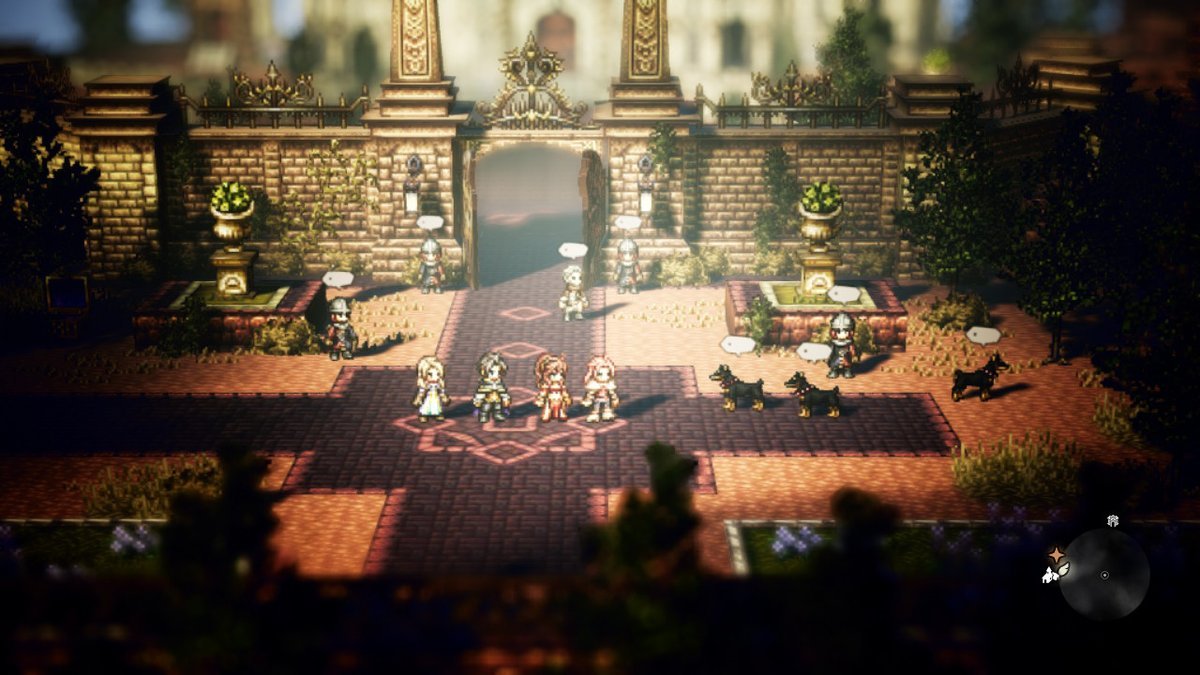
Octopath Traveler is, as the title suggests, about eight individuals who, for one reason or another, end up traveling the country of Orsterra. You can start with any of the eight you want, and upon completing the first chapter of their story, move on the next chapter, or take a break to seek out another of the eight and start their narrative.
Each character has four chapters to their story, but they don’t really overlap. I suppose this is a necessity due to the freeform way you can choose and play through each character’s narrative. However, it is a bit jarring that these travelers never really become close in the way a traditional RPG cast does. Instead, whichever character’s chapter is currently active is the focus of the story at the given time and the other two in the party are mostly there to help with combat and their unique path actions.
Some of the characters’ stories are pretty cookie cutter JRPG-type stuff. There are a few twists and turns that keep you guessing. Octopath Traveler is very much a love letter to the 16-bit era so having story elements be a homage is to be expected. The disappointment with the game’s story for me almost entirely stemmed from the lack of interaction between the characters instead of their personal stories.
Octopath Traveler Review: An Homage, Not a Rip-Off
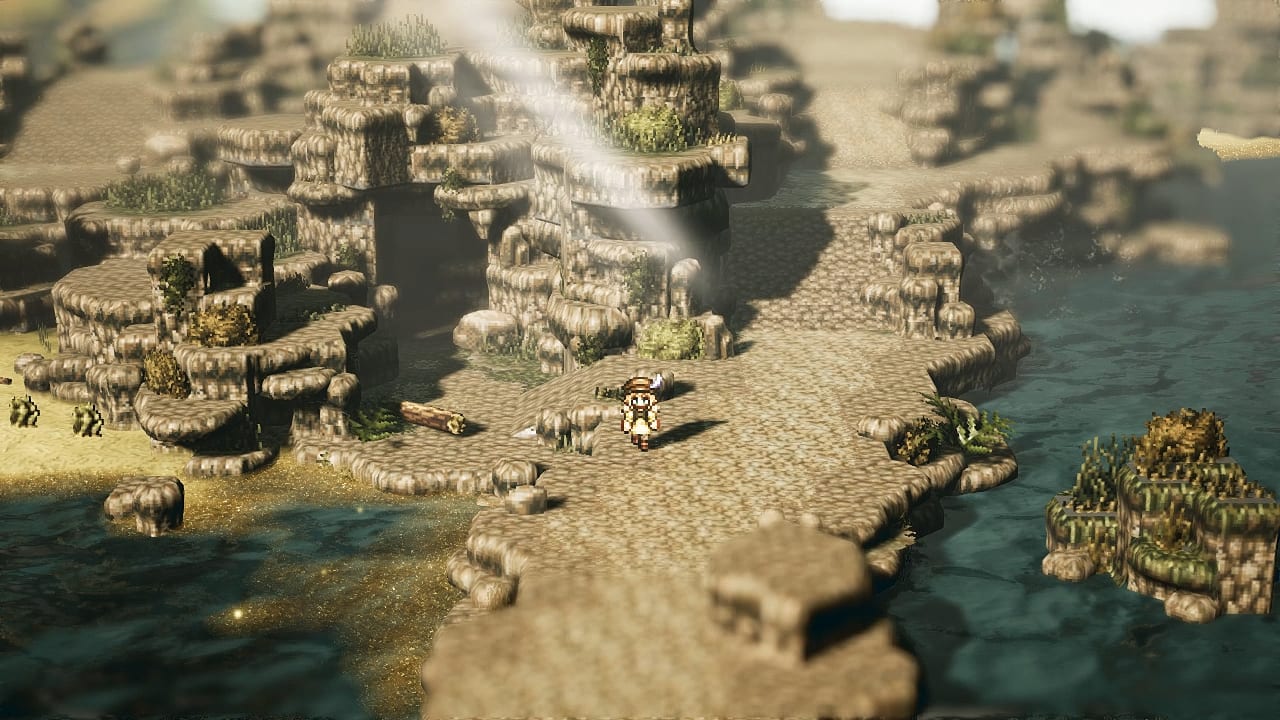
The factor that drew me to Octopath Traveler at first glance was the graphics. It’s this aspect that really makes the game stand out from both its 1990s-era predecessors and the plethora of recent games that have imitated that aesthetic. Square managed to replicate the style of 16-bit sprites while also adding dynamic backgrounds, lighting, and effects that give a contemporary feel.
It’s the graphics that really mark Octopath Traveler as a homage to the 16-bit era instead of an imitator. We all to often see nostalgic cash-ins these days that bring nothing new to the table. Why would I want to play something that feels like it’s 20-30 years old when I could just go back and actually just play an NES or SNES game? Square struck the right balance between nostalgic and modern game design in Octopath Traveler, and by doing so made a game without any current peers.
Octopath Traveler Review: Choose Your Path (Action)
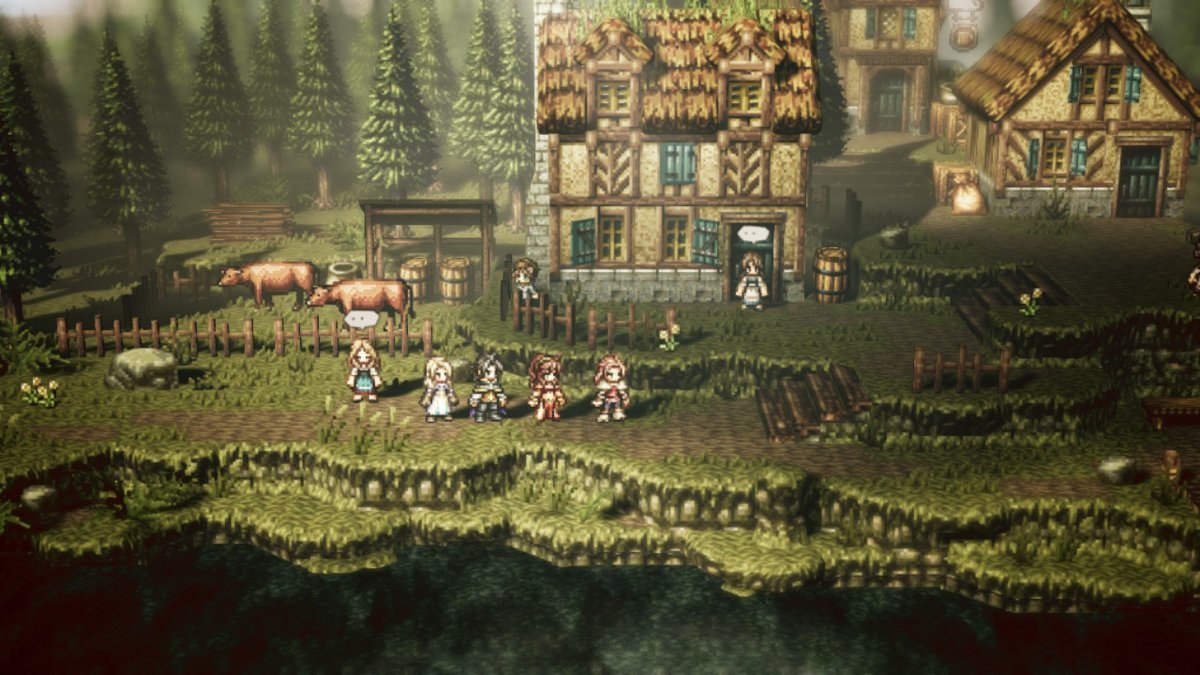
One of the most inventive elements in Octopath Traveler is that each character has a unique path action that allows them to interact with the citizens of Orsterra. For example, Cyrus the scholar can scrutinize the NPCs you meet which gives you a blurb of background story about them and can lead to hidden items or new quests. Tressa, the merchant, can purchase items from NPCs that would otherwise be inaccessible.
All eight characters have individual talents that make interacting with the world much more dynamic than it would be otherwise. However, this is another area where seeing some interplay between heroes would have added a lot. Combining path actions could have led to some unusual situations and given more reasons to think of party composition.
Octopath Traveler Review: Simple Doesn’t Mean Easy
The battle system is a twist on Square’s classic turn-based formula. It’s incredibly streamlined, and each character only has a small number of skills and weapon-types to choose from. While I would usually balk at having my choices limited in a game, it works out well here and lets you concentrate on optimizing the flow of battle.
There are two facets on which the combat relies: the boost and break systems. If your character waits a turn, they’ll gain a Battle Point. You can gain up to four of them to boost your character. A boost allows you to perform an action more than once. Boost twice and choose to attack and your character will attack twice.
Boosting plays into the break system. Each enemy has a set of weaknesses along with a number that determines their resistance. If you hit them with a weakness over the amount they can resist, then their defense is broken, and they’re weakened and unable to act for a turn.
Between boosting and breaking allow you to craft a strategy which enables you to maximize damage while keeping your enemy pinned down and unable to act. Because each enemy has different weaknesses, though, you must continuously adjust your skills, party composition, and weapons to maximize your combat effectiveness.
I will say that I don’t like random battles, which is the system Octopath Traveler uses. The encounter rates here are pretty fair, but I’d much rather see the enemies. This is something people tend to love or hate when it comes to RPGs, so it may be a factor in your decision to check out the game.
Octopath Traveler Review: Nostalgic, But Inspired
Octopath Traveler might seem like a pure throwback at first glance. However, upon playing it, I realized that it’s a game all its own. It pays homage to 16-bit games but isn’t afraid to do its own thing. It doesn’t use nostalgia as a crutch and avoids the pitfall of lacking any substance other than that drawn from older games.
I heartily recommend Octopath Traveler to any RPG fan. Whether you cut your teeth playing Final Fantasy on SNES, or if you weren’t even born yet, this game has a lot to offer. The narrative and character interaction leave a bit to be desired, but the overall quality of the game overshadows its deficiencies.
-
Old-school JRPG aesthetic with modern effects looks amazing.
-
Simple but rewarding battle system keeps things fresh.
-
Likable characters, each with unique ways of interacting with the world.
-
Random battles may turn some players off.
-
The eight characters' stories don't intertwine and they have very little interaction with one another.
Octopath Traveler Job Class/Characters
-
Octopath Traveler Apothecary
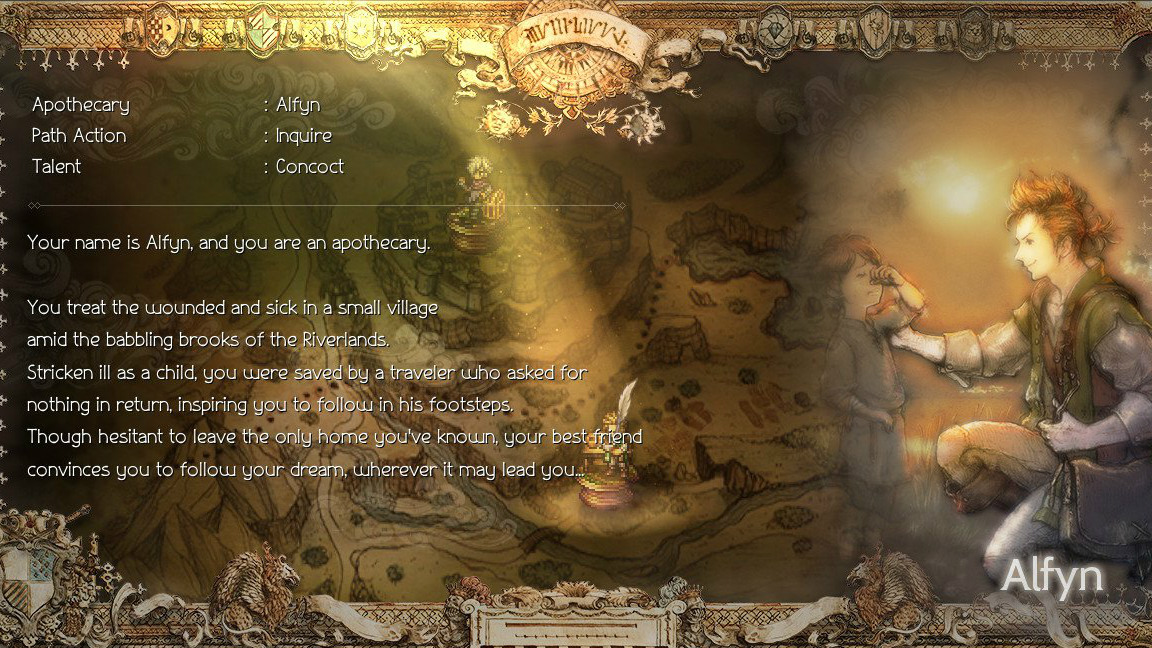
-
Octopath Traveler Cleric
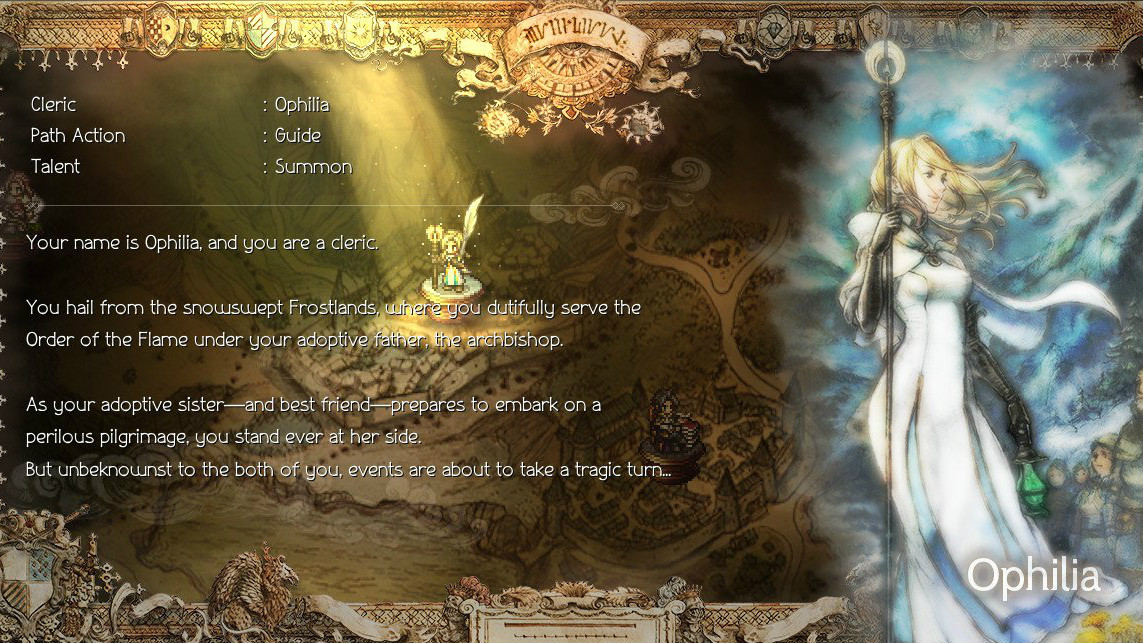
-
Octopath Traveler Dancer
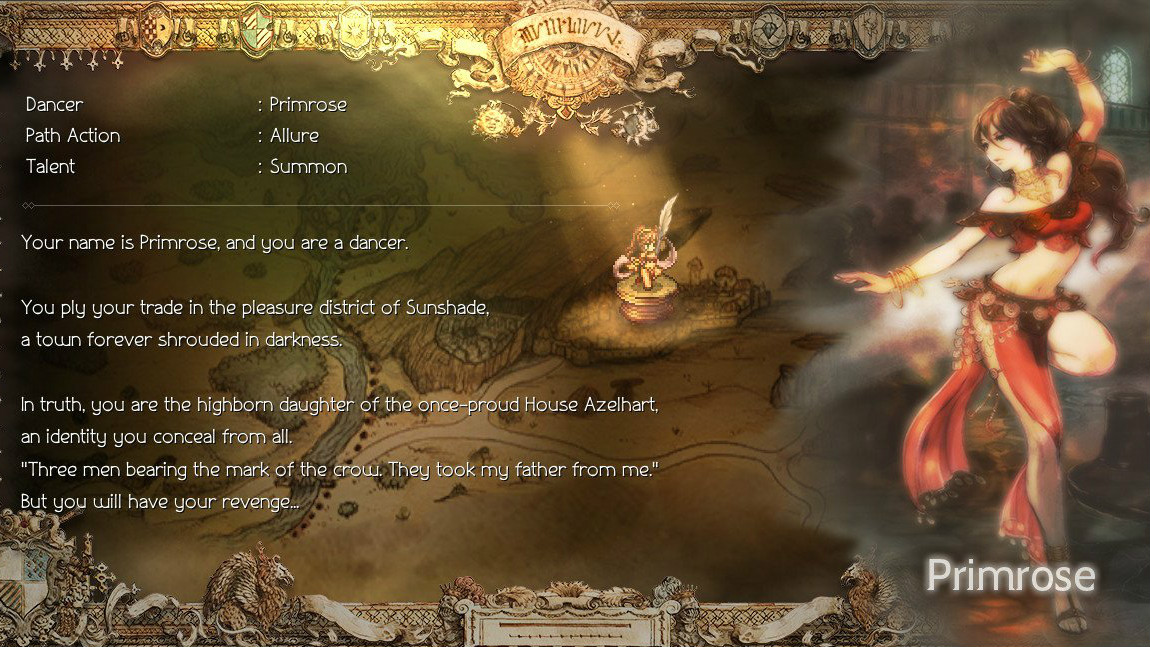
-
Octopath Traveler Hunter
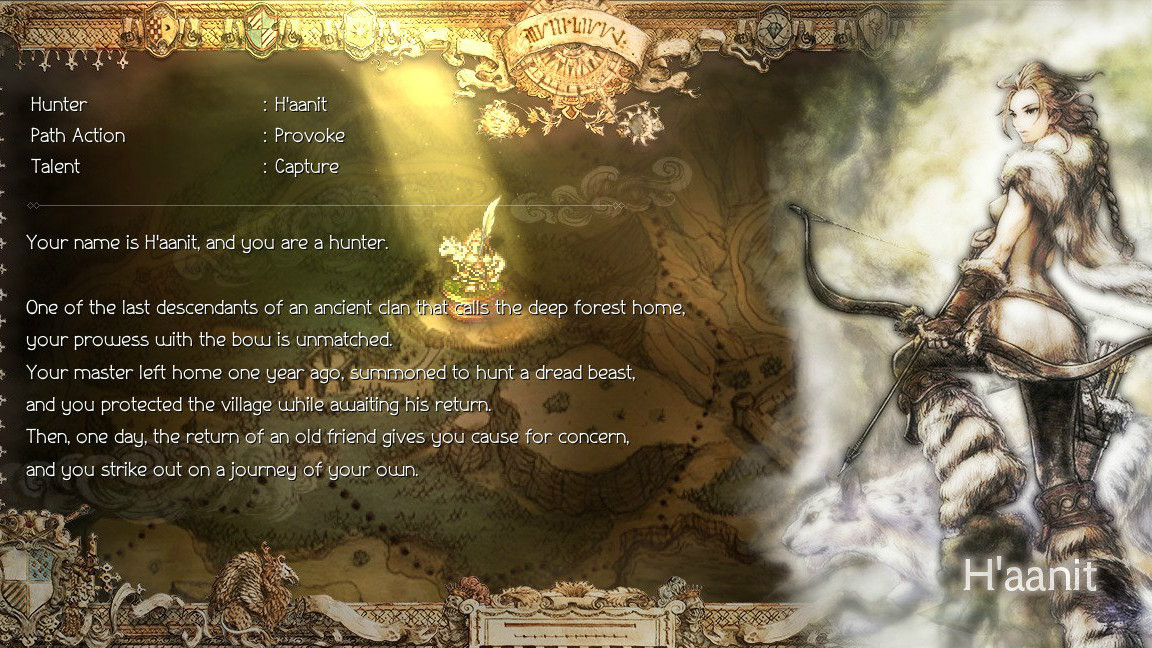
-
Octopath Traveler Merchant
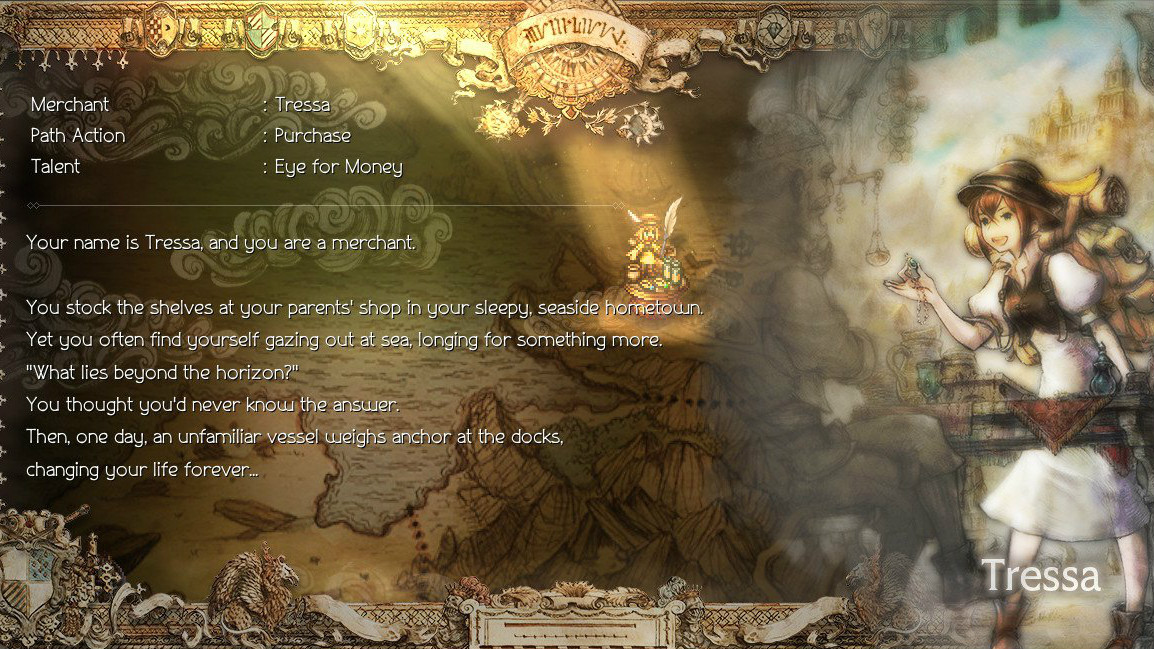
-
Octopath Traveler Scholar
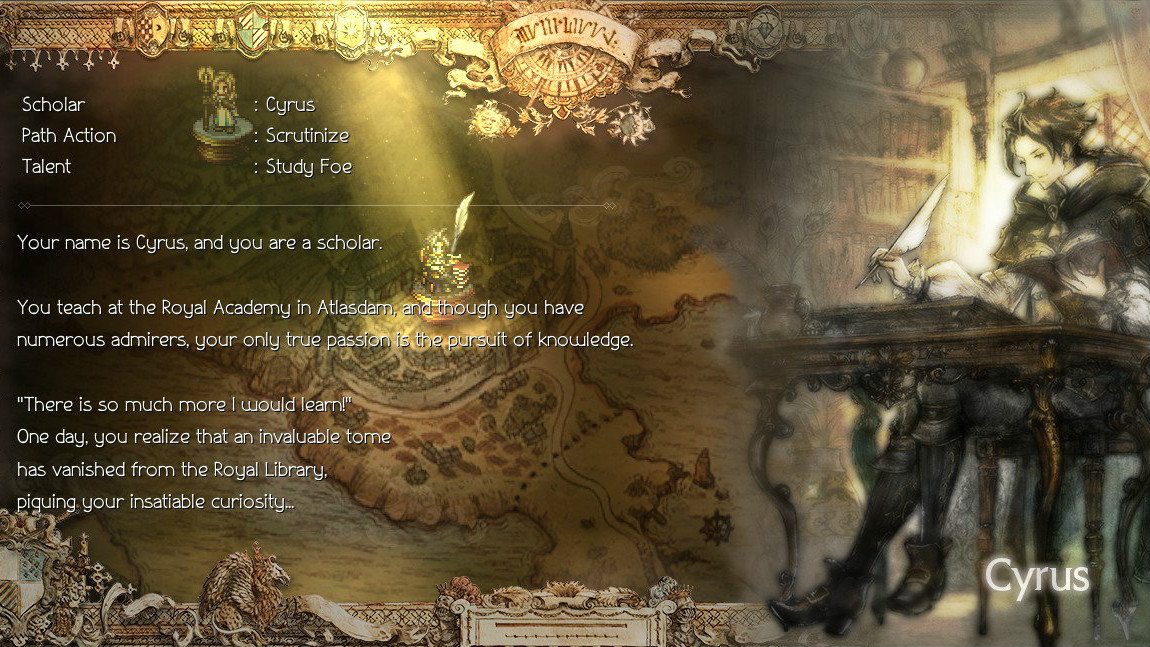
-
Octopath Traveler Thief
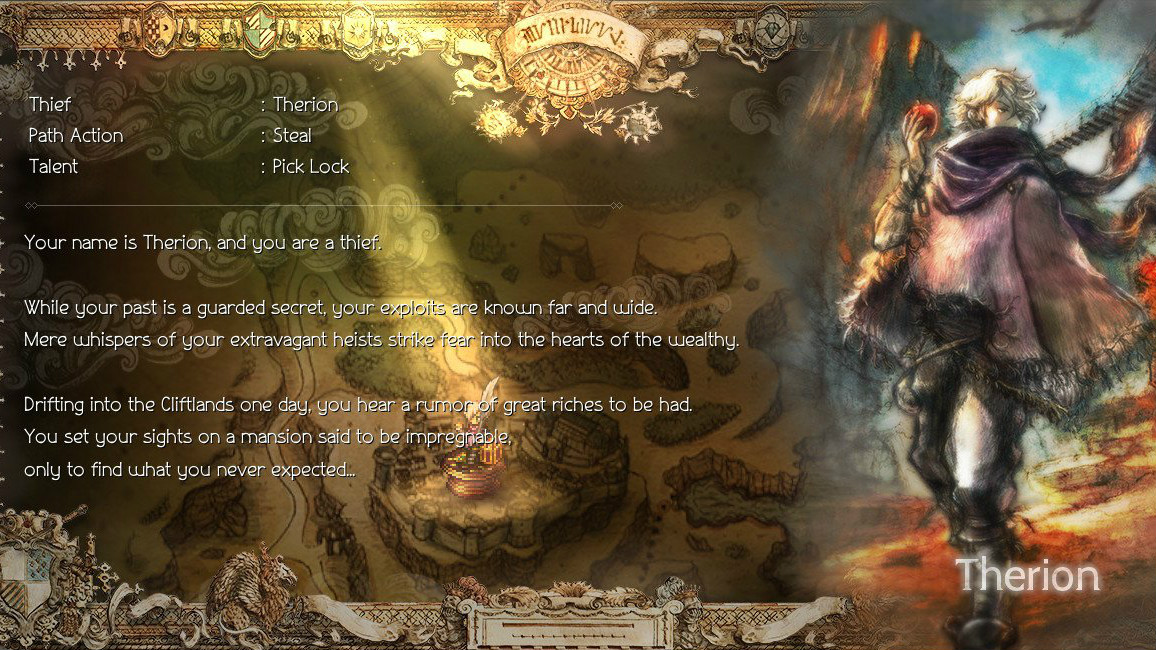
-
Octopath Traveler Warrior
